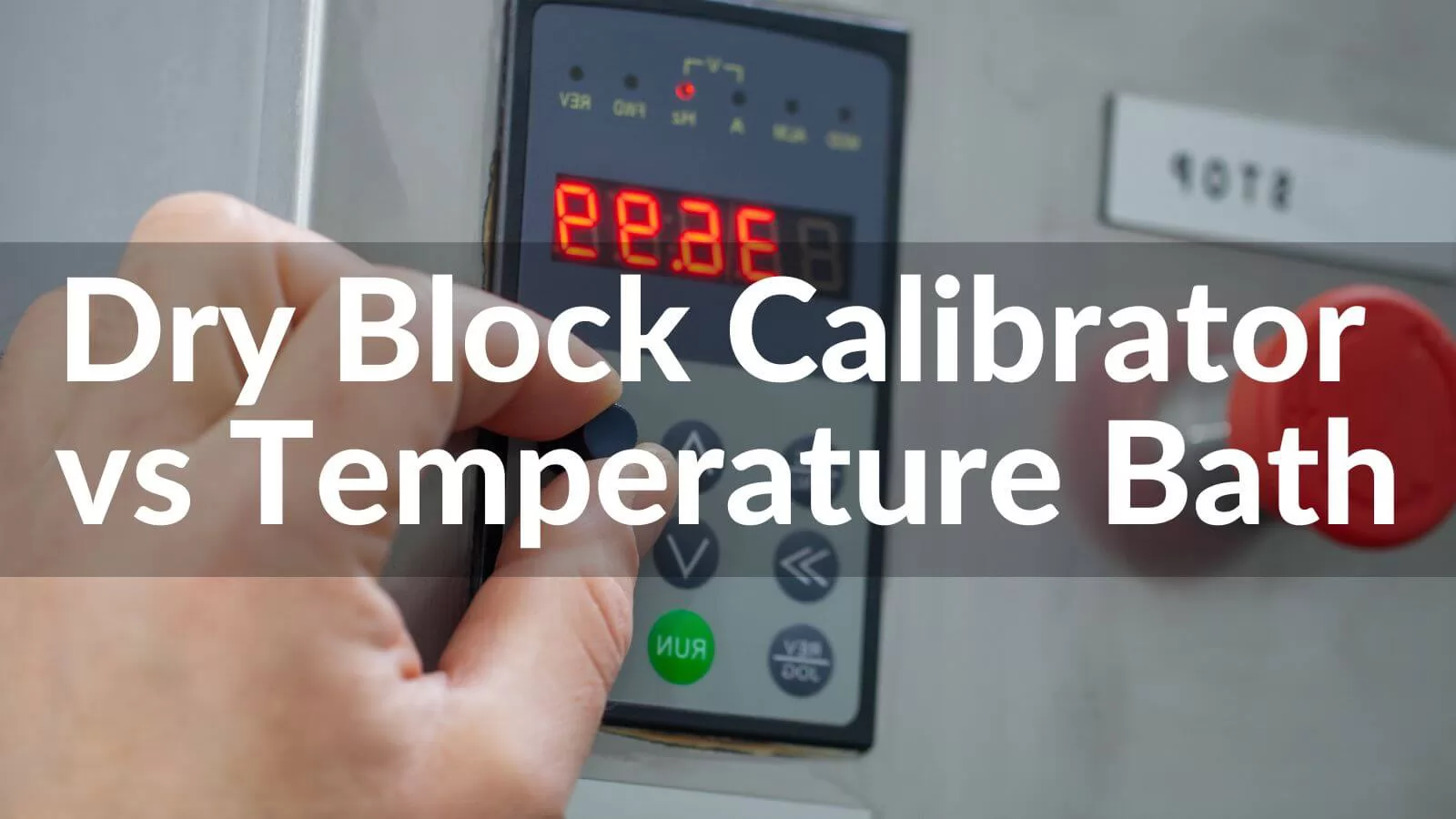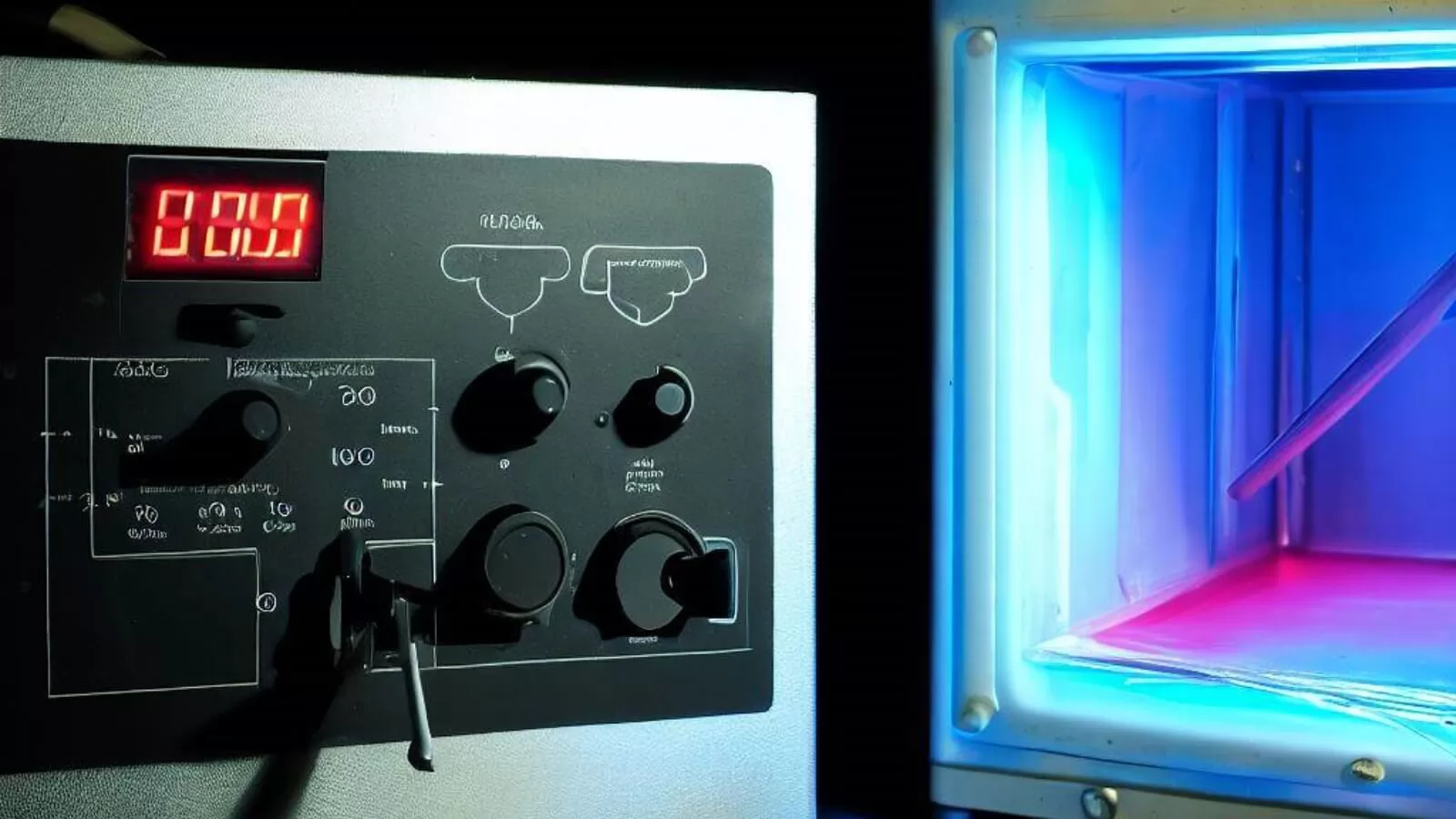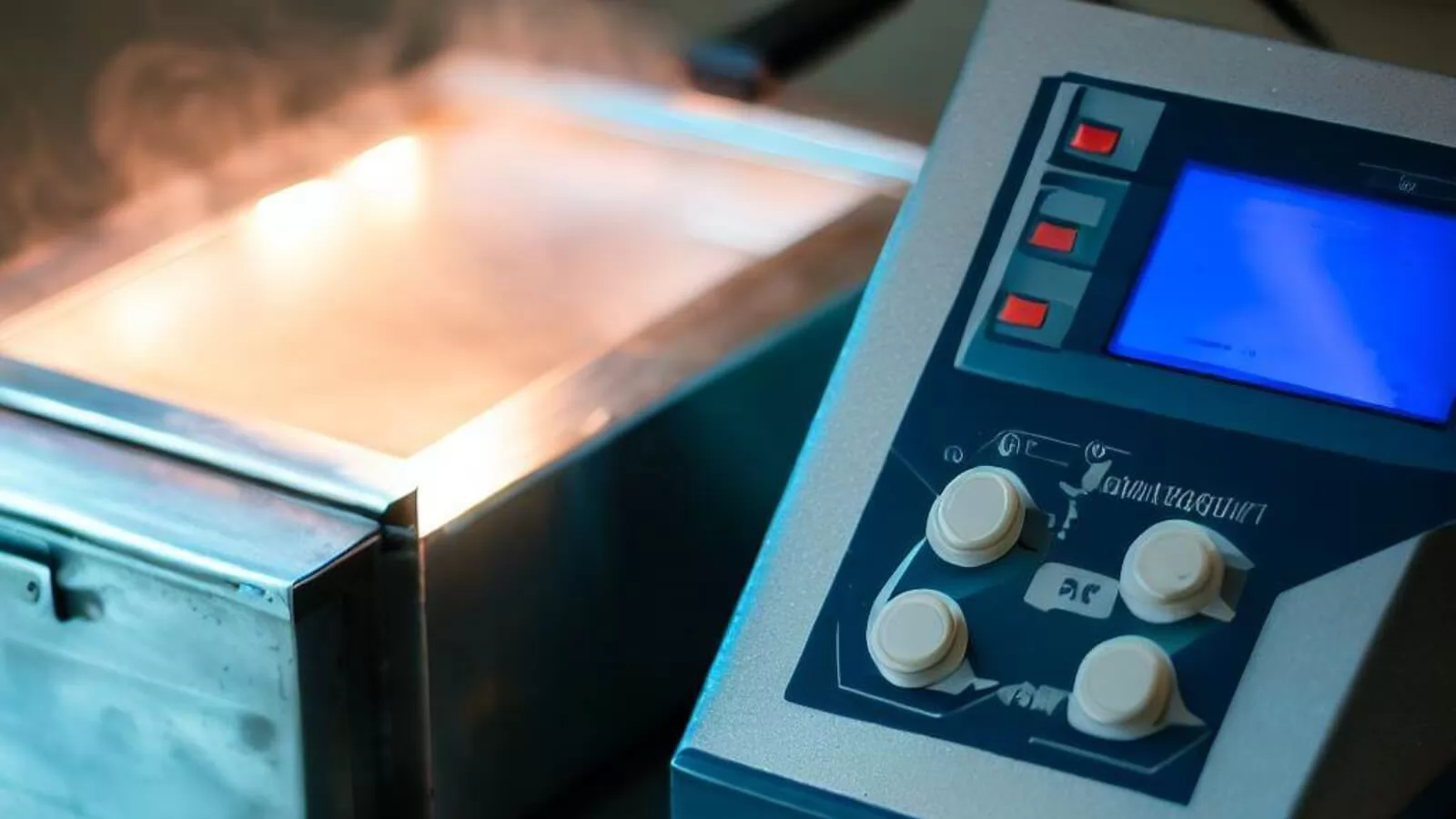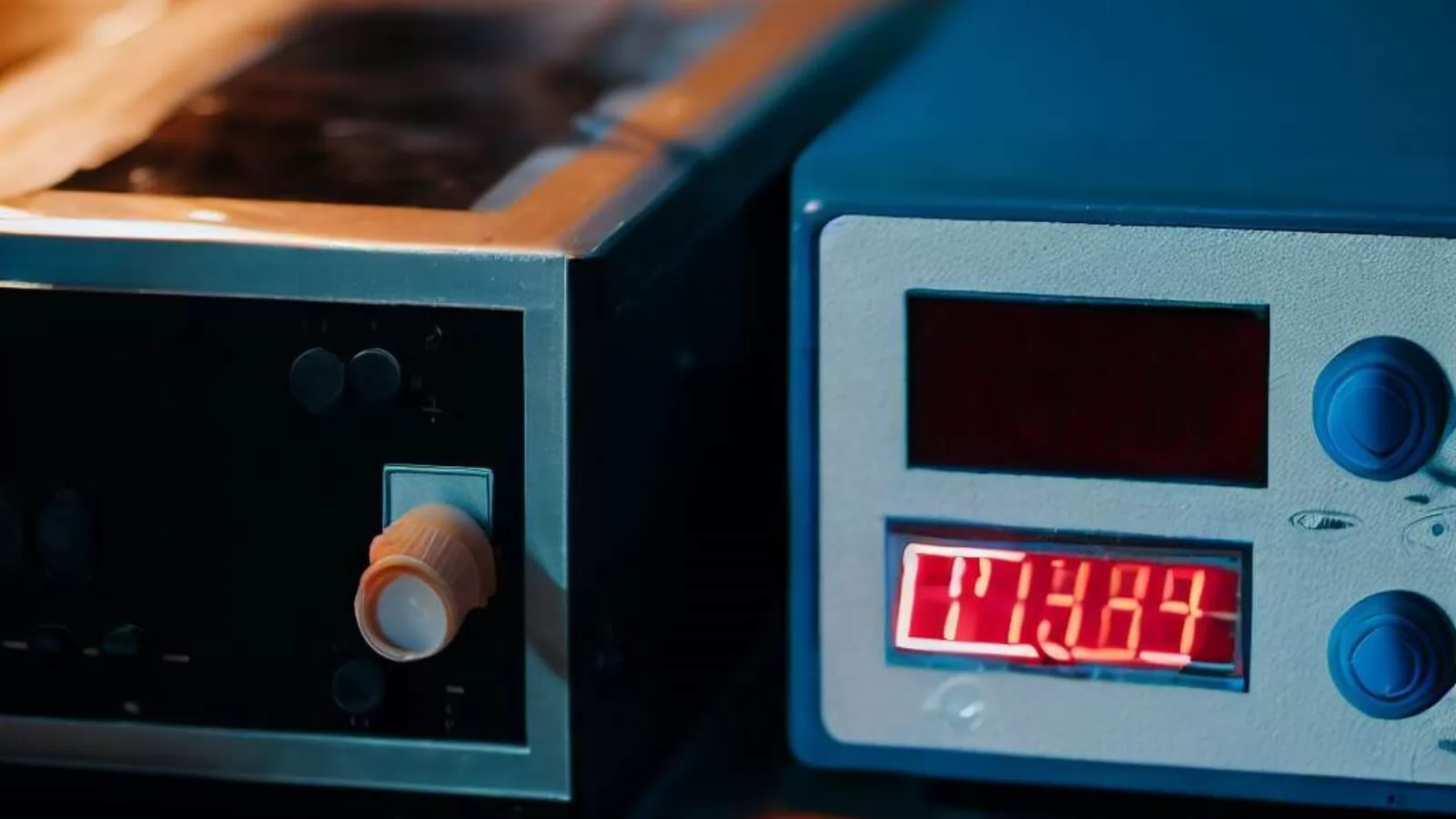
Accurate temperature measurement in industrial environments is essential for guaranteeing quality control, safety, and legal compliance. To assure the accuracy and dependability of temperature monitoring instruments, temperature calibration entails checking and modifying the devices. Maintaining product quality, streamlining manufacturing procedures, and avoiding costly errors and downtime all depend on accurate temperature calibration.
There are several ways to calibrate temperature, but two common ones are the Temperature Bath and Dry Block Calibrator. While Temperature Baths are larger, stationary devices that use a liquid medium to control temperature, Dry Block Calibrators are portable devices that generate stable temperatures using heated blocks. The best way to choose will rely on the particular demands and conditions of the application since both offer benefits and drawbacks.
This article will compare and contrast the Dry Block Calibrator and Temperature Bath methods for temperature calibration, examining their features, benefits, drawbacks, and use cases. By exploring the differences and similarities between these methods, readers will be better equipped to choose the right temperature calibration equipment for their industrial needs.
1. What is Dry Block Calibrator?

➢ Definition and explanation of the Dry Block Calibrator:
A Dry Block Calibrator is a temperature calibration device that uses heated metal blocks to generate stable temperatures. The blocks have precision-drilled holes that allow temperature sensors, such as thermocouples and RTDs, to be inserted for calibration. The blocks can be heated or cooled to a specific temperature, and the temperature can be maintained for extended periods with minimal drift.
➢ How it works and how it differs from other temperature calibration methods:
Dry Block Calibrators work by transferring heat from the block to the temperature sensor being calibrated. The blocks are made of materials with high thermal conductivity, such as aluminum, brass, or copper, which allows for efficient heat transfer. Compared to other temperature calibration methods, such as liquid baths or furnace calibration, Dry Block Calibrators are more portable, compact, and easy to use.
➢ Advantages and disadvantages of using a Dry Block Calibrator for temperature calibration:
The advantages of a dry block calibrator are portability, rapid setup, and little maintenance. They can also provide outstanding stability and accuracy for a range of temperature readings. Due to their limited temperature range, which is typically between -100°C and 1200°C, they might not be suitable for calibrating large sensors or instruments.
➢ Use cases and applications of a Dry Block Calibrator:
Dry Block Calibrators are commonly used in industries such as pharmaceuticals, food processing, and HVAC, where temperature measurement is critical for ensuring product quality and safety. They are also popular in field service applications where portability and ease of use are important.
2. What is a Temperature Bath?

➢ Definition and explanation of the Temperature Bath:
Utilising a liquid medium, frequently oil or water, a temperature calibration device known as a "Temperature Bath" produces consistent temperatures. The existence of a heating element and a cooling system allows the equipment to maintain a steady temperature throughout a wide range. The accuracy of temperature sensors may be calibrated using the liquid.
➢ How it works and how it differs from other temperature calibration methods:
Temperature Baths work by heating or cooling the liquid medium to a specific temperature, which is then transferred to the sensor being calibrated. Compared to Dry Block Calibrators, Temperature Baths can generate a wider range of temperatures, typically ranging from -90°C to 400°C, and can accommodate larger sensors and instruments.
➢ Advantages and disadvantages of using a Temperature Bath for temperature calibration:
Advantages of using a Temperature Bath include the ability to generate a wider range of temperatures, higher throughput, and suitability for calibrating larger sensors and instruments. However, Temperature Baths are typically larger and less portable than Dry Block Calibrators and may require more maintenance and setup time.
➢ Use cases and applications of a Temperature Bath:
In fields like aerospace, automotive, and energy, where high-temperature applications are frequent, temperature baths are frequently employed. In research and development settings, they are also used to calibrate temperature sensors and devices.
3. Dry Block Calibrator vs Temperature Bath: A Comparison

1. Comparison of the features and capabilities of the Dry Block Calibrator and Temperature Bath methods:
There are a number of things to compare between Dry Block Calibrators and Temperature Baths, including accuracy, temperature range, portability, simplicity of use, and maintenance needs. Compared to Temperature Baths, Dry Block Calibrators are often more portable, simpler to operate, and less maintenance-intensive. For larger sensors and instruments, Temperature Baths are preferable because they can produce a wider range of temperatures.
2. Pros and cons of using each method for temperature calibration:
3. Applications and use cases where one method may be preferred over the other:
The choice between Dry Block Calibrators and Temperature Baths depends on the specific application and use case. For field service applications where portability and ease of use are important, Dry Block Calibrators are often preferred. For laboratory and manufacturing environments where high-temperature applications are common, Temperature Baths may be a better choice due to their wider range of temperatures and ability to accommodate larger sensors and instruments.
Conclusion
In this article, we have discussed the importance of temperature calibration in industrial settings and compared two methods for temperature calibration: Dry Block Calibrators and Temperature Baths. We have explained the features, capabilities, advantages, and disadvantages of each method and provided use cases and applications where one method may be preferred over the other.
When selecting a temperature calibration method, it is important to consider factors such as accuracy, range of temperatures, portability, ease of use, and maintenance requirements. By understanding the differences between Dry Block Calibrators and Temperature Baths, you can choose the method that best suits your specific needs and requirements.
If you have other questions, please contact us!
Related Articles
What is a Surface Probe Calibrator?
What is a Humidity Calibrator? (what you must know)



